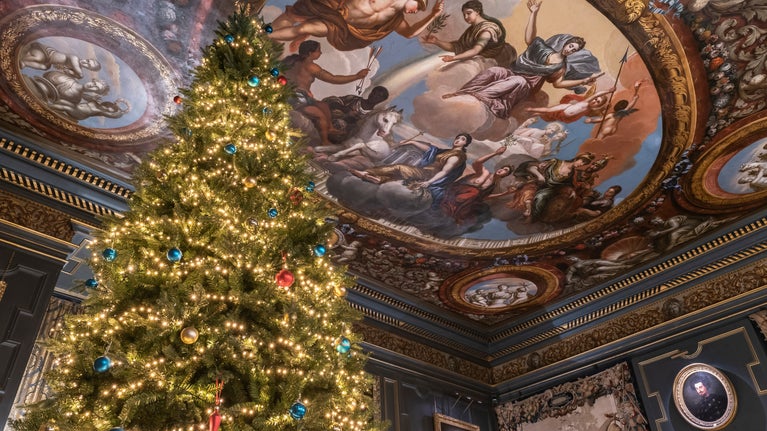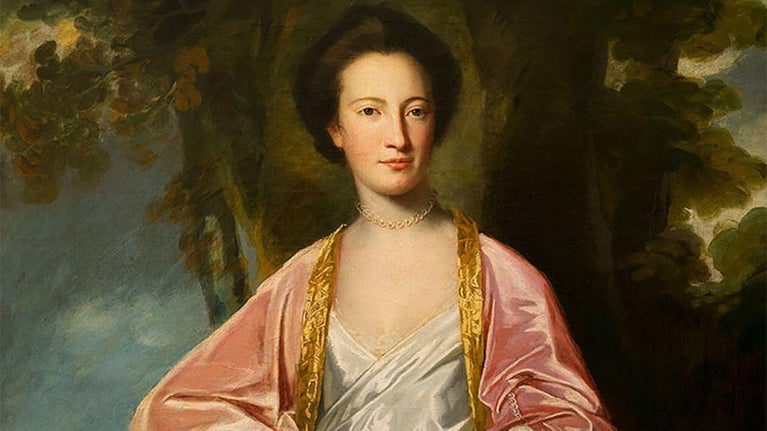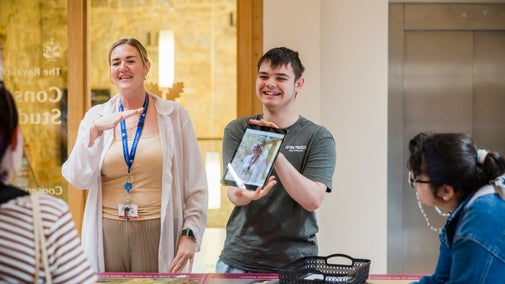
Immerse yourself in history
Meet people from the centuries gone by, learn about the unique artworks in our care and understand more about historic traditions.

Many of the places and collections we care for reflect the experiences and challenges people with disabilities faced throughout history, and the individuals who supported them. Learn more about the people behind these connections and how their legacy can shape perceptions and our work today.
Cecilia lived at Sizergh in the Lake District during the late 18th and early 19th century. She was an heiress in her own right, inheriting the significant Lancashire estates of Standish and Borwick.
Later in life, Cecilia suffered from rheumatism, a condition that causes pain and swelling in the joints. She wrote about it in a 1790 letter to her brother Charles, saying, 'my limbs so stiff and uneasily swelled that everything is a trouble to me'.
Her bed was lowered to make it easier to get in and out of and she also used a very early model of a wheelchair where small wheels were attached to the legs of a simple armed chair. She referred to this as a ‘chariot’ and arranged to have a ramp built into the grounds so she could continue enjoying the gardens.
Sizergh is currently fundraising to reinstate this ramp in Cecilia's honor alongside other changes to improve access for visitors. These include the Holesack Accessible Trail, a circular route around the estate that is suitable for wheelchair users like her.
Tredegar House in Newport was home to Courtenay Morgan, who inherited the title Lord Tredegar in 1913. Over the years his eyesight worsened, so he made adaptations around the house, which included adding handrails inside and outside his home. Courtenay even removed the glass cover from his watch so that he could feel the hands to tell the time.
Courtenay also made arrangements and adjustments for his employees and estate residents who had a range of disabilities. These changes helped them all to have more active lives.
He supported the Cardiff Institute for the Blind and the Newport and Monmouthshire Blind Aid Society, and his uncle set up guided visits to the estate for blind visitors.

As a child, Airmyne Jenney visited Calke Abbey in Derbyshire regularly to see her grandparents. She lived there from when her brother Charles inherited the estate in 1949.
In the 1940s, Airmyne worked at the Army Remount Centre at Melton Mowbray in Leicestershire, where the military trained horses and mules. It was here that she was kicked by a horse, which left her unable to speak.
Over many years and with the support of her family and a speech therapy book, Airmyne learned to talk again. As part of her therapy, she was asked to write seven sentences to practice. These sentences reveal her warmth and sense of humour, and also show the value she placed on her relationship with her brother Henry – who she described phonetically in her book as ‘Hen-ry the lis-ner’.

Herbert Oldfield was a glassworker who specialised in making glass eyes during the late 1800s. It's likely that he created these prosthetics from a workshop in his home in the Birmingham Back to Backs.
At this time, Birmingham was going through an industrial boom, with a large percentage of its inner-city population working in factories. Accidents and casualties were common as there was an absence of health and safety laws and no National Health Service to support people. Those who had lost eyes from injury or through illness would purchase glass replacements from craftsmen like Herbert.
In 2019, we began a research partnership with the University of Leicester. This included working with the Research Centre for Museums and Galleries to reveal more connections that the histories of properties, sites, landscapes and collections in our care have with disability and the stories of the people involved. Everywhere and Nowhere, a film presented by artist Chris Samuel, showcases just some of these stories.

Meet people from the centuries gone by, learn about the unique artworks in our care and understand more about historic traditions.
We welcome disabled visitors, companions, carers and assistance dogs. Find out about our Essential Companion pass for individuals and Links Pass for groups.

We're committed to meeting the needs and expectations of a diverse society. Find out what we're doing to create an inclusive, accessible and welcoming environment for our supporters, staff and volunteers.

Learn about the remarkable women in history linked to the places in our care, from the political player who helped make Charles II king, to the archaeologist who discovered a 7th-century Saxon ship burial.

From landscape gardeners to LGBTQ+ campaigners and suffragettes to famous writers, many people have had their impact on the places we care for. Discover their stories and the lasting legacies they’ve left behind.
